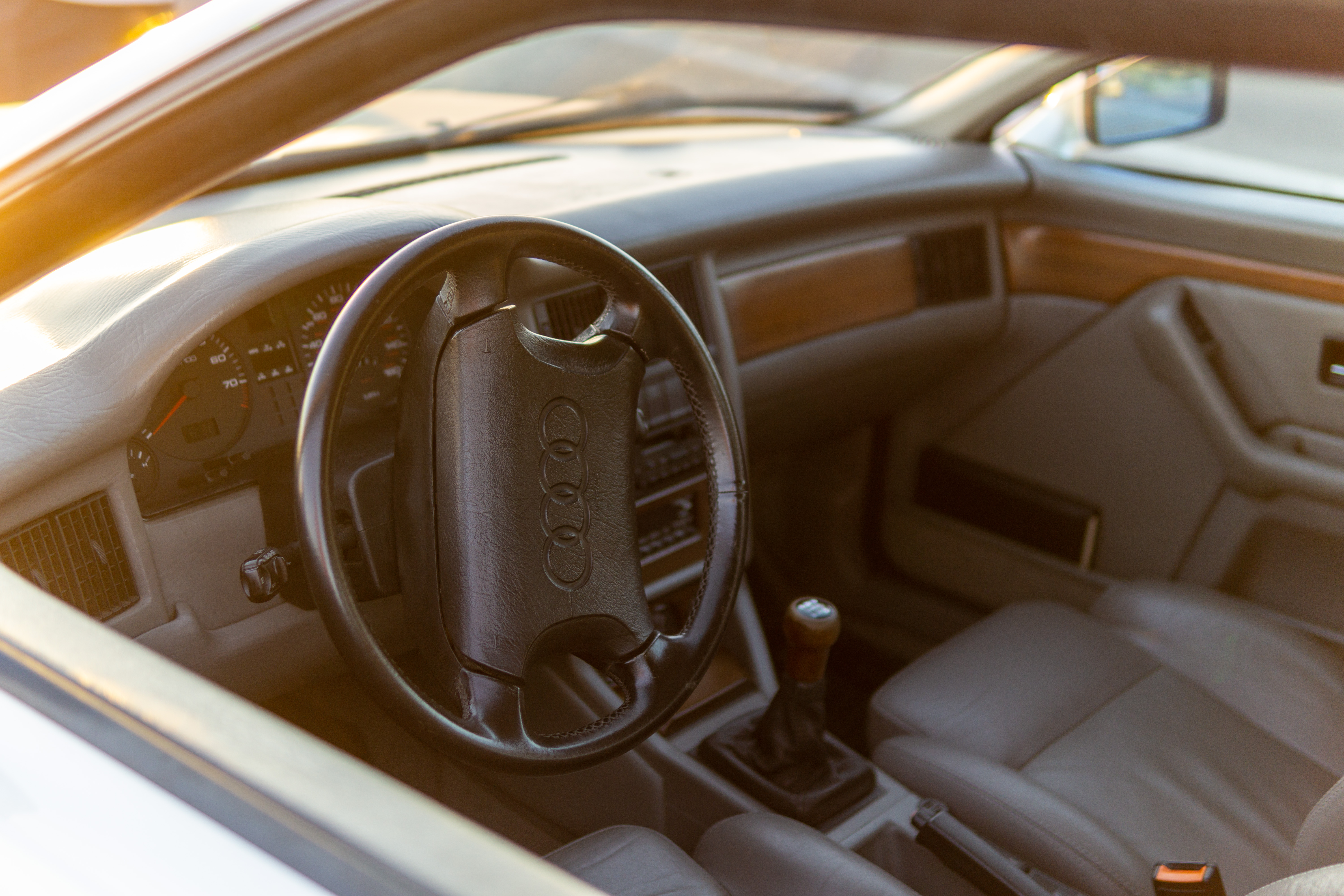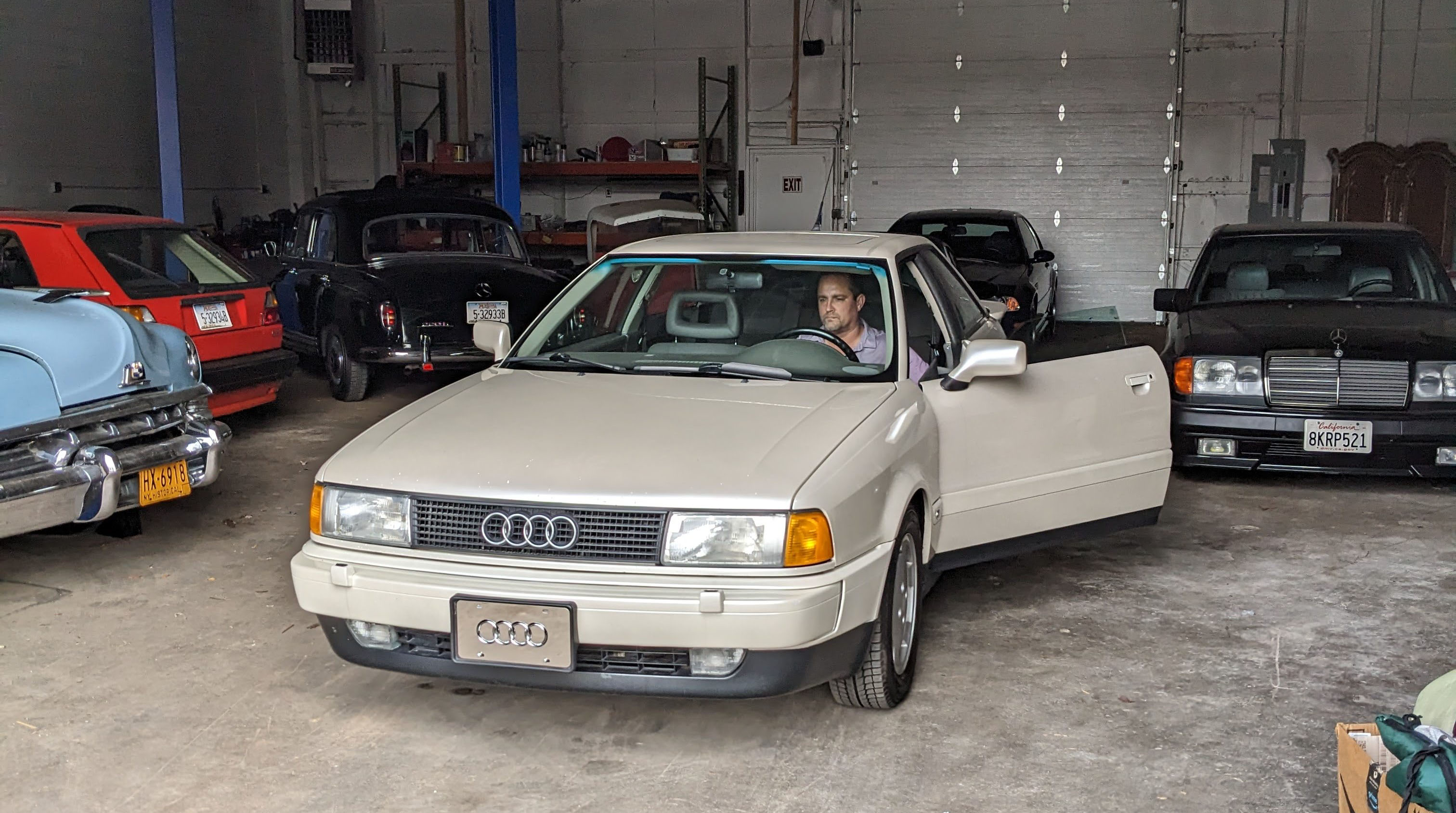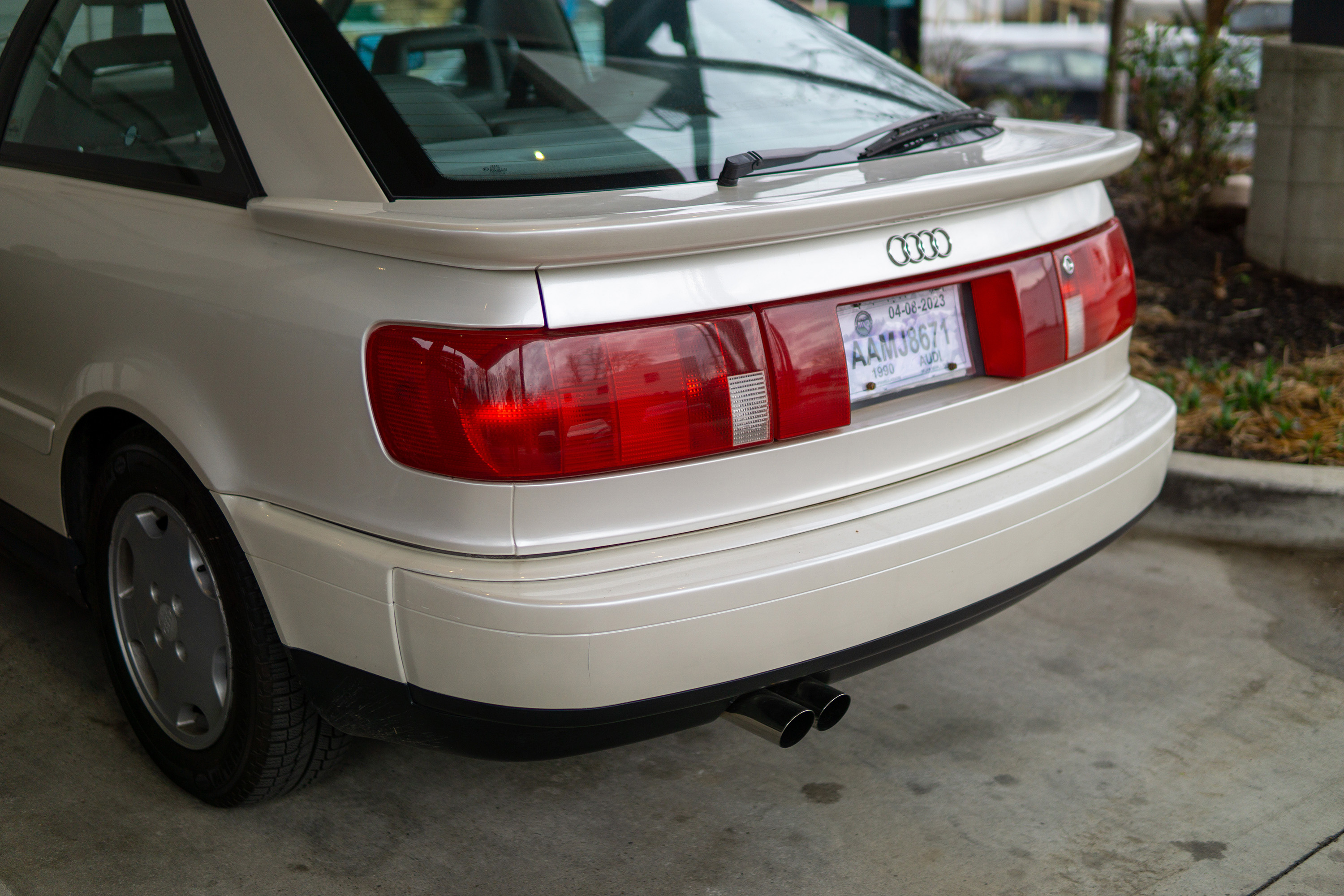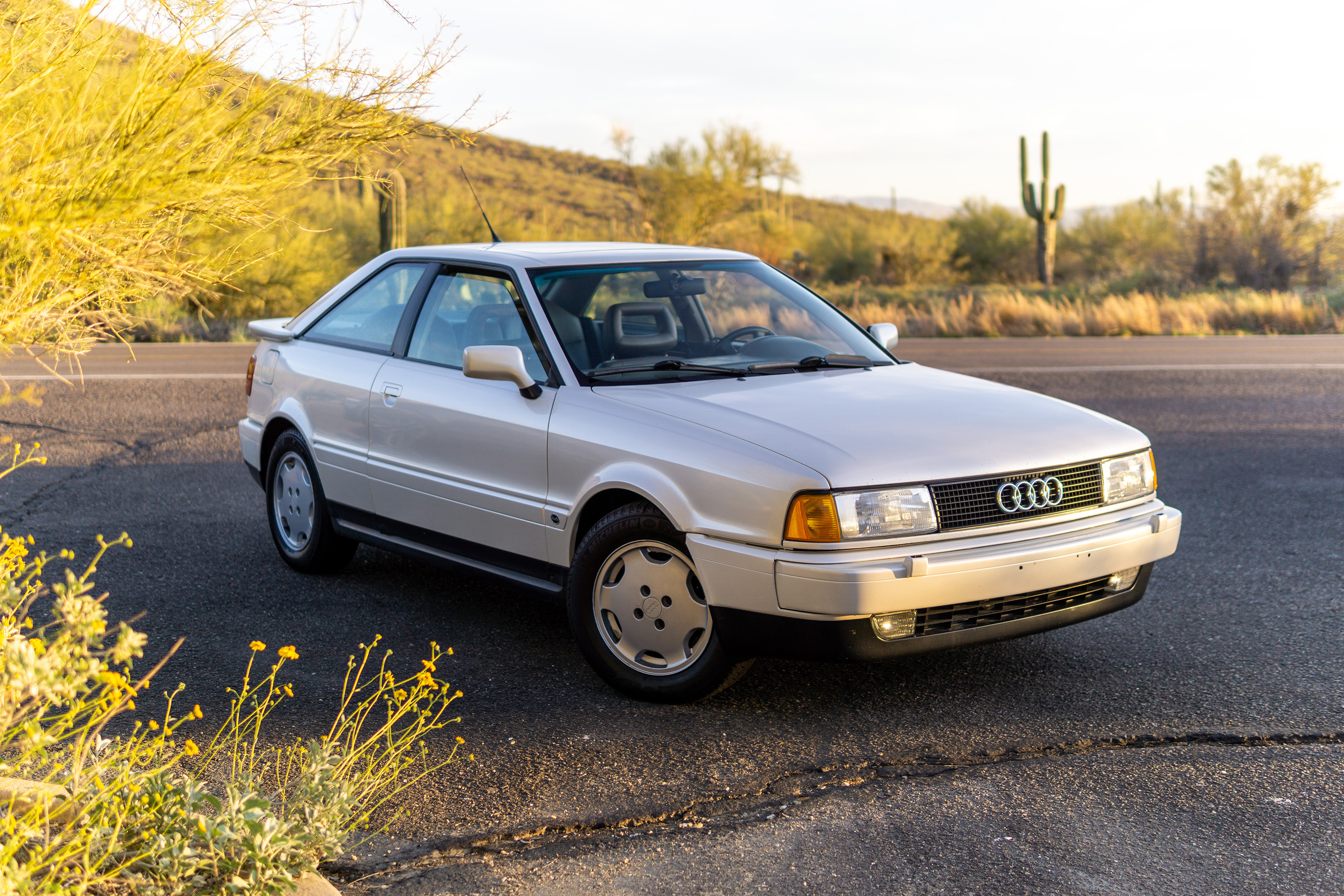Innovating Toward Unsustainability
What I learned driving a vintage Audi across the country.

There is perhaps nothing more quintessentially American than long road trips. The open road beckons the adventurous soul to traverse the vast expanse of this diverse country. Driving from one coast to the other carries one through the stories of countless miles, echoes of bygone eras, through communities of both fulfilled dreams and bitter disappointment.
It was only recently that I went on this journey for the first time in my life, after having so far lived without the experience of traveling across the country by car. It was my first trip, but not the first trip of my well-traveled companion, a little pearl white Audi coupe that was ready to teach me a few things. At thirty-three years old, she’s lived in Texas, California, Colorado, Ohio, North Carolina, and was now taking me back to Arizona.
Mark picked me up from the airport in Charlotte and drove me to his little warehouse. Nestled among other vintage vehicles of another era, I packed my suitcase into the hatch, and cranked the engine for the first time. I gave the car a quick once-over, checking tires, brakes, engine oil, and other fluids, while Mark signed the official bill of sale.
There was no going back now, we were officially on the road.

When our appliances break down and the cost of repair approaches the cost of an entirely new unit, we usually toss out the old one and don’t look back. Maybe it ends up in a recycling center, a landfill, a junkyard, or is sold for scrap, but to us, it doesn’t matter. In our relentless pursuit of technological advancement, we find ourselves believing that technological complexity has become synonymous with progress. We inherently expect every generation of new iPhones to have more features, better cameras, a bigger screen, etc.
But there are always a group of nutcases, enthusiasts who can’t be bothered by modern trends, who do whatever it takes to preserve, retrofit, and maintain vintage cars and devices. Sometimes, the pendulum swings back in their direction, vindicating all the years of putting their faith in an obsolete technology. I’m talking about things like the manual transmission, vinyl records, film photography, or mechanical keyboards, obsolete technologies that are now once again growing in popularity year over year as people realize that innovation is not always progress.
There are many reasons not to drive a vintage car. Automotive safety, emissions regulations, and parts availability are all quandaries that have plagued vintage car enthusiasts. But talk to anyone who has decided to persevere through these challenges to keep an old vehicle in their garage, and they’ll talk endlessly about the quality and simplicity that simply no longer exists.
The first few miles were a dance with the unknown, as every creak and groan of the vintage vehicle whispered the tales of its age. Would this relic hold up under the strain of the open road, or would it succumb to the inevitable breakdown that seems to befall even the most reliable of companions on a cross-country journey?
Reality started to sink in the first twenty minutes on the road, when I found out that the air conditioning system was non-operational. Without air conditioning, I was missing one of the most important amenities of the modern era, and would make this road trip so much more painful. But other than the lack of interior climate control, a cruise control that temperamentally stopped working, and what felt like a minor slip in the clutch pedal, Pearl was comfortable on the freeway, ready to stretch her legs and keep pace with everything else on the road.

Nostalgia is a powerful drug. It’s a common trope in essays like this or interviews with car collectors to hear about the posters they had up in their childhood bedrooms, or the cars they raced in video games as they were coming of age. Or maybe it’s triggered by the smell of a carbureted engine or sound of an engine built when mufflers and catalytic converters did not come standard.
So why did I buy a car that rolled off the assembly line before my parents even met? I could tell you about the technical configuration that exists in very few other cars: the five cylinder naturally aspirated engine, the two-door coupe chassis, the five speed manual, and the quattro all-wheel drive system. But even more importantly, I’m eager to become a part of the community connected through forums and facebook groups that are trading and refurbishing old parts. I’m drawn by the challenge of rethinking sustainability by maintaining an older vehicle.
A generation of consumers are waking up to sustainability. Our slogans tell us to protect the environment, to reduce, reuse, recycle. Laws introduce incentives to buy electric vehicles, create a market to regulate industrial emissions, and facilitate recycling programs to convince us to discard more consciously. Corporations, the very ones writing the doctrine of planned obsolescence, are touting their commitments to sustainable energy, waste reduction, and many other green initiatives. Many of my own friends and family have bought electric vehicles, choosing to opt in to new attempts of protecting our environment.
But the push for electric vehicles in the name of sustainability has always felt backwards to me. Instead of reducing the number of cars on the road by investing in public transit, converting gasoline-powered vehicles to hybrid or electric, or finding other ways to drastically reduce emissions, the solution given to us is to completely rebuild the entire vehicle fleet and infrastructure across the US with electric cars that are on average far bigger and heavier than the cars currently on the road.

Breakdowns did occur, as if to validate the concerns that had nagged at the corners of my mind. At my cousin’s home in Dallas, I discovered a fuse that was so burnt it was melted, a fan relay that was straight up missing in action, and an alternator belt that decided it no longer wanted to be a part of the system. We found ourselves fortuitously broken down in the parking lot of an Audi dealership, where a service manager told me he had never seen this car in over ten years of working for Audi. Their generosity had us back on the road the next day.
One of the supposed selling points of electric vehicles is that they are lower maintenance merely due to the fact that they have far fewer moving parts. Gone are regular oil changes, spark plugs, coolant leaks, and all the other regular maintenance that comes with a gasoline-burning engine. And yet, not a single manufacturer has made their electric vehicles easily serviceable by the consumer the way that most gasoline cars have been in the past. Functionality is locked down in software and other proprietary hardware, essentially forcing consumers to pay the price quoted by the manufacturer for any kind of repairs or maintenance.
It’s hard to say what things will look like thirty years from now. Will our policies and technologies of today build a future where we have successfully figured out how to run sustainable societies? Will any automaker of the future prioritize user-friendly repairs and maintenance? Will self-driving cars make us even more car-dependent?
Luckily, the rest of the road trip was smooth sailing. She handled the open roads in West Texas with beauty and grace, cruising swiftly through the final thousand miles. A sense of relief was palpable as we arrived home, knowing that any further mechanical issues could be dealt with on a far more flexible schedule. The next few weeks had me doing an oil change, replacing a CV axle boot, and other small odds and ends.
As I reflect on this journey over half a year later, I can’t help but feel gratitude. Gratitude toward the people that have so meticulously maintained the vehicle now in my stable, but also grateful for the opportunity to explore my home country by car and see landscapes I have never seen before.